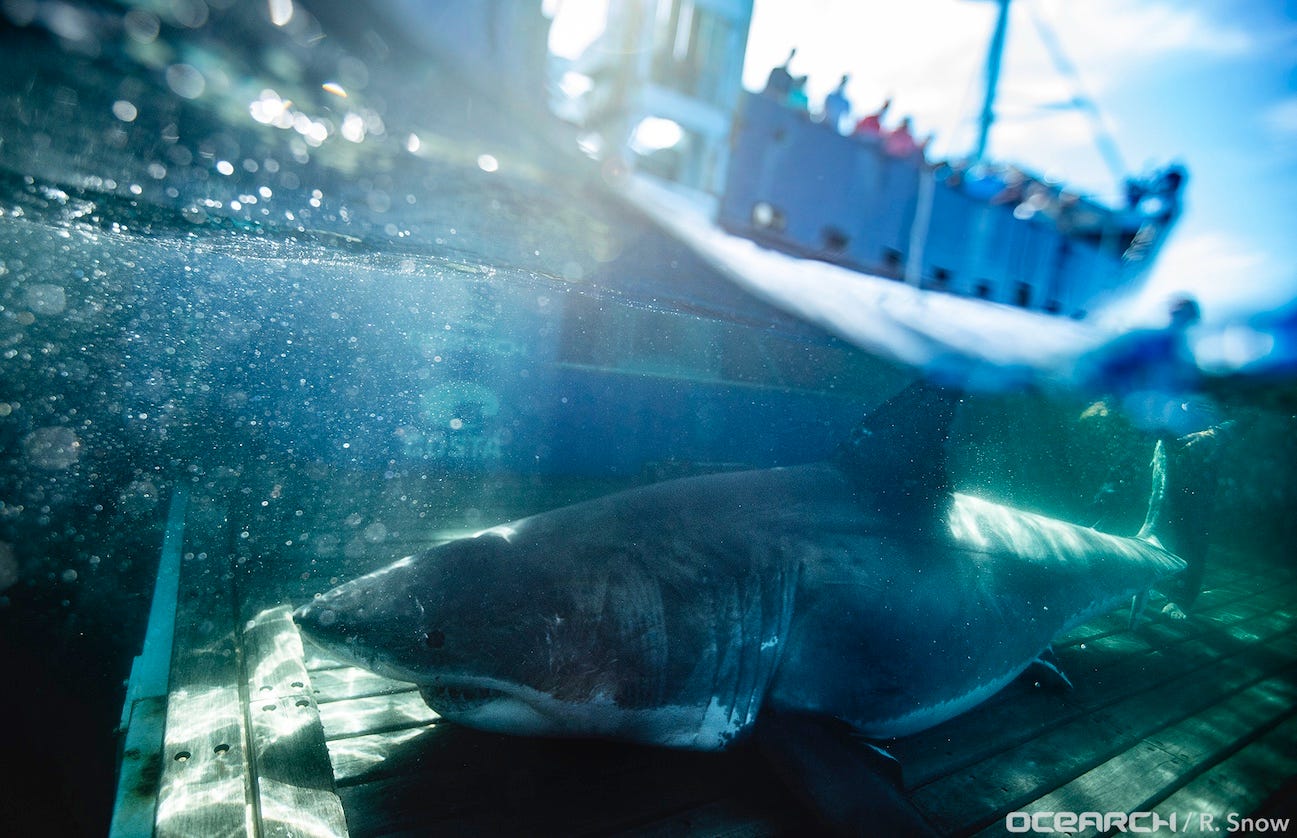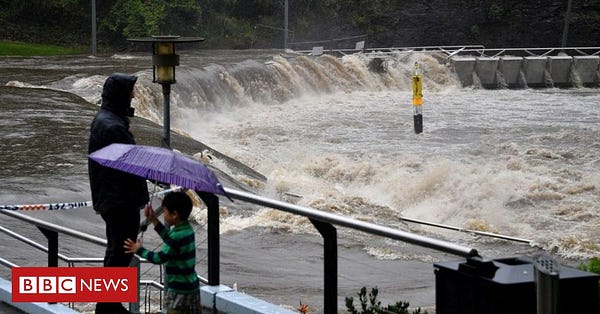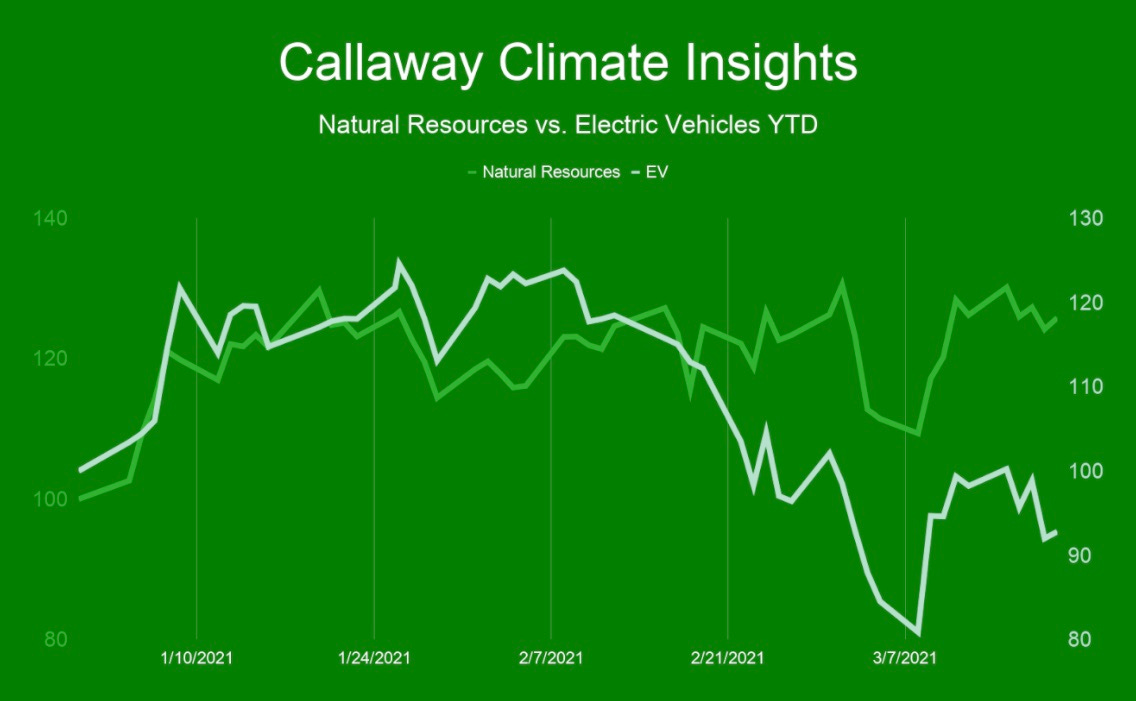The other China-U.S. talks; and natural resource stocks bucking the EV decline
Welcome to Callaway Climate Insights, and especially to new subscribers from our anniversary last week.
Can global warming thaw the frosty relations between China and the U.S.? After an acrimonious and unproductive set of meetings in Alaska this past weekend — which left relations at their lowest levels in years — the world’s two biggest polluters set plans for their top climate envoys to meet virtually Tuesday.
John Kerry and Xie Zhenhua will meet as part of a climate conference set up by China, the European Union and Canada. Kerry’s invitation is a strong signal that behind the theatrics of the U.S./China discord, there are narrow channels of cooperation that could be used to find common ground. A climate working group is expected to be the next step in coming weeks to future collaboration.
What they actually achieve together is the bigger question. The two countries, responsible for almost half of global greenhouse gas emissions, are moving in separate directions. China committed to being net-zero on carbon emissions by 2060, but not before emissions peak later this decade. (The most optimistic estimate is 2028). The U.S., by comparison, is under intense pressure from Europe to enact plans next month to cut emissions by up to 50% by 2030, by almost all accounts an unrealistic number.
For all the noble efforts to ring-fence climate change discussions from geopolitical talks because of their importance, actual cooperation inevitably circles back to real decisions on trade, technology-sharing, and global investment. The latter is tied directly to China’s Belt and Road Initiative, which relies heavily upon coal deals in other countries.
If there is a place for real negotiations to start, this is it.
More insights below. . . .
Don’t forget to contact me directly if you have suggestions or ideas at dcallaway@callawayclimateinsights.com.
Monday’s insights: Carbon price drumbeat grows as investment surges, plus the U.S. East Coast’s offshore wind edge
In Iceland, a volcano dormant for 6,000 years is erupting not far from Reykjavík. Meteorological officials said the eruption at this stage appears small, and no towns are considered threatened — but the spectacle is drawing attention.
. . . . Surging investment in carbon tracker securities since President Biden was elected have increased the pressure for a carbon price in the U.S., as a new economic survey revealed more than half of economists believe in a pricing scheme. Read more here. . . .
. . . . Carbon prices in Europe hit new records and Scandinavian banks are at the forefront of trading emissions permits, as interest among their customers has tripled in the past five years. Read more here. . . .
. . . . As the U.S. enters the offshore wind race, somewhat belatedly, the East Coast is shaping up to be a prime geographical era, with offshore turbines projected to be able to supply more than four times the electricity the region uses. Read more here. . . .
CCI Indexes: Natural resources companies riding out EV volatility
. . . . While electric vehicle stocks have been on a rocky road in recent weeks, shares of companies that produce stuff to go into those vehicles have been holding up relatively well. With more big automakers like Ford (F) and Volkswagen chasing Tesla (TSLA) into the EV market, investors appear to anticipate burgeoning demand for lithium and other minerals used in the cars and trucks. As blades are to razors, lithium is to battery makers. . . .
News briefs: March Madness is a slam dunk for sustainability


Editor’s picks:
NCAA tourney pivots to carbon-zero
Canada’s conservatives embrace warming denial
Land Down Under water: Aussies whacked by floods
Data driven: Where the sharks are

OCEARCH, an organization focused on data collection related to some of Earth’s sharks and turtles, is currently on its 40th data collecting expedition at sea, now through April 1. The expedition is exploring a new stretch of the Carolina coast. The group says it’s clear from tracking studies that it’s a critical overwintering site for NW Atlantic white sharks of all life stages. The region is a dynamic confluence of currents and water temperatures producing high productivity and potential food sources for the sharks. Since 2007, the group has tagged 416 animals thanks to the help of 198 different scientists looking to study topics ranging from changing marine behaviors and where these elusive creatures mate. Their latest expedition includes 42 scientists from 28 different institutions, contributing to 23 different studies in the process. Explore in real time with the group @OCEARCH.






